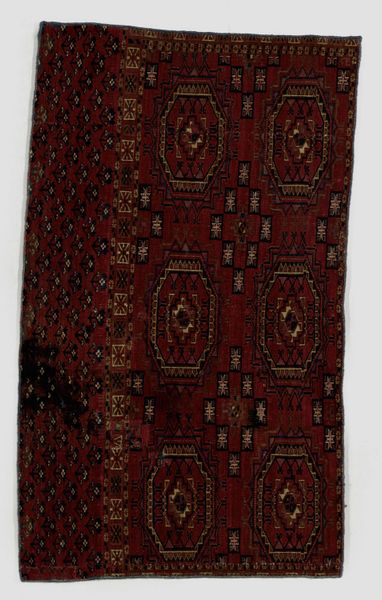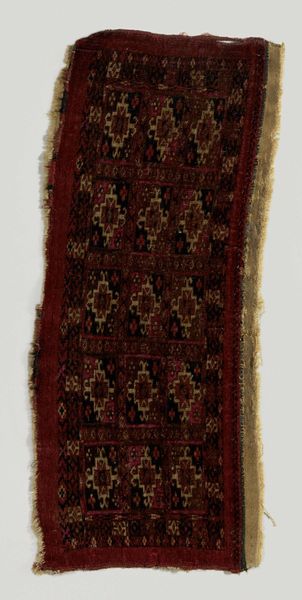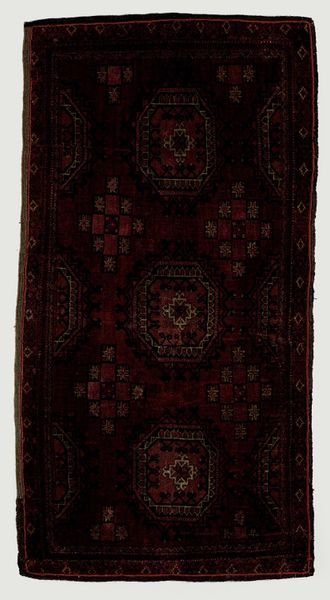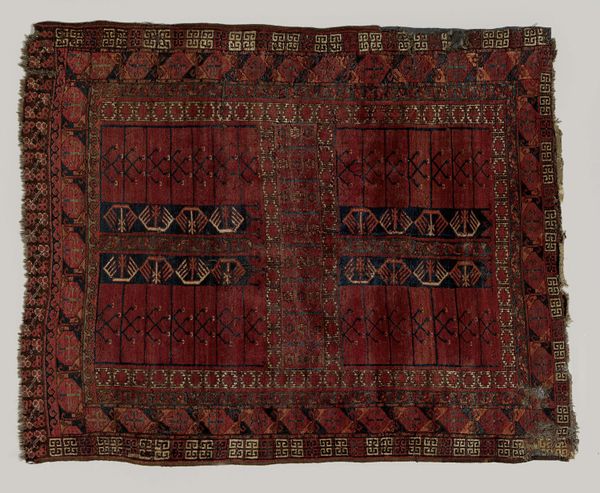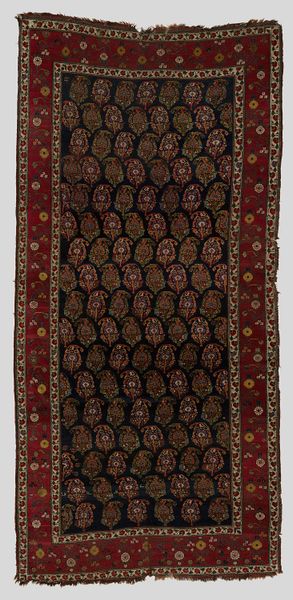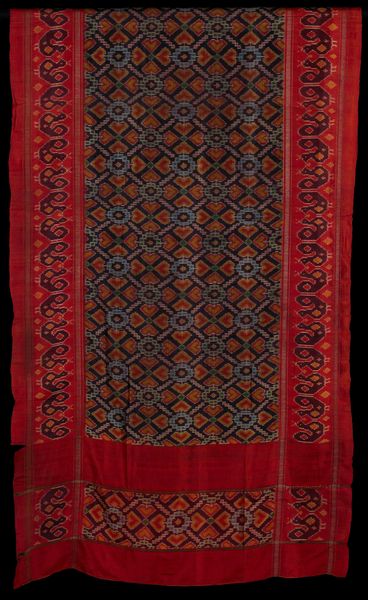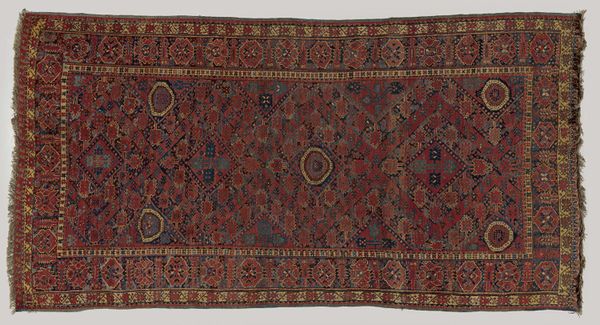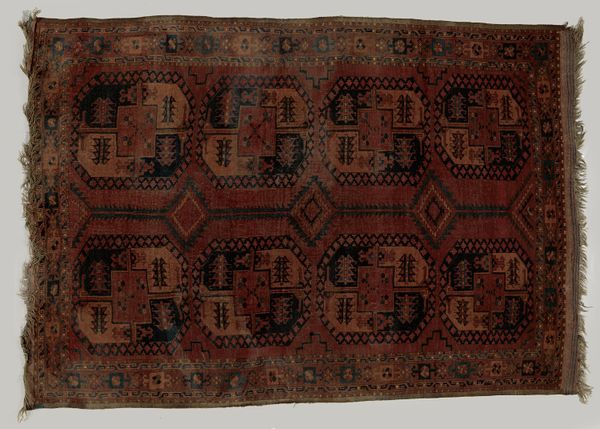
fibre-art, weaving, textile
#
fibre-art
#
pattern
#
asian-art
#
weaving
#
textile
#
geometric
#
fabric design
#
abstraction
#
pattern repetition
#
islamic-art
#
textile design
#
decorative-art
Dimensions: height 100 cm, width 164 cm
Copyright: Rijks Museum: Open Domain
Curator: What a fascinating textile. This is a tent flap, "Tentzakvoorblad," crafted by the Ersari people, dating roughly from 1875 to 1900. It’s primarily a work of fiber art, weaving, and decorative design. Editor: It strikes me as both powerful and intimate, given its purpose. The rich red field, the almost hypnotic verticality created by those stripes... There's a raw, elemental quality here that transcends mere decoration. Curator: Absolutely. We can situate this piece within a larger discussion about nomadic life and textile production, noting that the tent was more than just shelter, it was a powerful symbol of identity, community, and resistance. The tent flap, therefore, acts as a threshold into a complex social structure and cultural worldview. Editor: I see the verticals you mentioned also are visually segmented into bands of repeating geometric figures, forming sophisticated visual syntax. How do the specific design motifs play into that structure? I notice variations within that pattern of repetition. Curator: Those variations could speak to different roles within the community or even specific family histories encoded into the weave. Some scholars believe such designs held apotropaic functions, warding off negative energies. Moreover, we might explore how the visual language in nomadic cultures negotiates its relationship to the dominant sedentary cultures and empires bordering it. Editor: Intriguing. And consider how this functional object aesthetically organizes space, delineating between the private world of the tent and the external environment. The materiality also hints at a sophisticated understanding of semiotics; the color, pattern, texture... they coalesce into a system of communication. Curator: Yes, and viewed from today’s perspective, it prompts critical reflections on globalization, cultural preservation, and the commodification of traditional crafts in an increasingly interconnected world. How does displaying such an object, stripped of its original context, risk perpetuating cultural appropriation, for example? Editor: Indeed, there’s always a risk, but engagement is crucial. Seeing how these foundational visual components achieve complexity through simple techniques invites us to explore these patterns in unexpected new configurations. It sparks an appreciation for visual language itself. Curator: It encourages us to unpack layers of meaning beyond aesthetics, pushing us to appreciate this culture's place within greater historical contexts of power. Editor: Quite right. It transforms how one observes, perceives, and ascribes symbolic significance to fundamental forms, as it challenges us to seek deeper meaning in patterns.
Comments
No comments
Be the first to comment and join the conversation on the ultimate creative platform.
